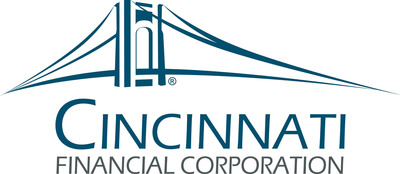Cincinnati Financial Corporation Declares Regular Quarterly Cash Dividend
Cincinnati Financial (Nasdaq: CINF) declared a $0.87 per share regular quarterly cash dividend at its Nov 14, 2025 board meeting.
The dividend is payable January 15, 2026 to shareholders of record on December 22, 2025. Management framed the payout as a demonstration of the board's confidence in the company's capital position and steady, disciplined operating approach.
Cincinnati Financial (Nasdaq: CINF) ha dichiarato un dividendo in contanti ordinario trimestrale di 0,87 USD per azione durante la riunione del consiglio del 14 novembre 2025.
Il dividendo è pagabile 15 gennaio 2026 agli azionisti registrati al 22 dicembre 2025. La direzione ha inquadrato l'erogazione come una dimostrazione della fiducia del consiglio nella posizione di capitale dell'azienda e nel suo approccio operativo costante e disciplinato.
Cincinnati Financial (Nasdaq: CINF) declaró un dividendo en efectivo trimestral regular de 0,87 USD por acción en la reunión de la junta del 14 de noviembre de 2025.
El dividendo será pagadero el 15 de enero de 2026 para los accionistas registrados al 22 de diciembre de 2025. La dirección enmarcó el pago como una demostración de la confianza de la junta en la posición de capital de la empresa y en su enfoque operativo constante y disciplinado.
Cincinnati Financial (나스닥: CINF)은 2025년 11월 14일 이사회에서 주당 0.87달러의 정기 분기 현금 배당금을 발표했다.
배당금은 2026년 1월 15일에 지급되며 2025년 12월 22일 기준 주주에게 지급된다. 경영진은 이 배당을 이사회가 회사의 자본 상태에 대한 신뢰와 지속적이고 규율된 운용 방식에 대한 확신의 표시로 해석했다.
Cincinnati Financial (Nasdaq: CINF) a annoncé un dividende trimestriel en espèces de 0,87 USD par action lors de la réunion du conseil du 14 novembre 2025.
Le dividende sera payable le 15 janvier 2026 aux actionnaires enregistrés au 22 décembre 2025. La direction a présenté ce versement comme une démonstration de la confiance du conseil dans la position de capital de l'entreprise et dans son approche opérationnelle constante et disciplinée.
Cincinnati Financial (Nasdaq: CINF) gab eine reguläre vierteljährliche Bardividende in Höhe von 0,87 USD je Aktie bei der Vorstandssitzung am 14. November 2025 bekannt.
Die Dividende wird am 15. Januar 2026 an die Anteilseigner mit dem Stichtag 22. Dezember 2025 gezahlt. Das Management stellte die Ausschüttung als Demonstration des Vertrauens des Vorstands in die Kapitalposition des Unternehmens und in einen stabilen, disziplinierten Betriebsansatz dar.
Cincinnati Financial ( Nasdaq: CINF ) أعلنت عن م Dividend نقدي ربع سنوي منتظم بمقدار 0.87 دولاراً للسهم في اجتماع المجلس بتاريخ 14 نوفمبر 2025.
سيكون الدفع 15 يناير 2026 للمساهمين المسجلين حتى 22 ديسمبر 2025. وصفت الإدارة الدفع بأنه دليل على ثقة المجلس في المركز الرأسمالي للشركة وفي نهج تشغيلي ثابت ومنضبط.
- Dividend declared of $0.87 per share
- Payable date set for January 15, 2026
- Record date set for December 22, 2025
- None.
Stephen M. Spray, president and chief executive officer, commented, "From our roots as a small, agent-founded insurer to a company with deep financial strength and a track record of profitable growth, the principles established at our founding 75 years ago still guide us today. This dividend declaration is a tangible demonstration of our board's confidence in our capital position and in our operational performance. Our goal remains consistent: deliver steady value to our shareholders while supporting our agents and maintaining a disciplined approach to managing risk."
About Cincinnati Financial
Cincinnati Financial Corporation offers primarily business, home and auto insurance through The Cincinnati Insurance Company and its two standard market property casualty companies. The same local independent insurance agencies that market those policies may offer products of our other subsidiaries, including life insurance, fixed annuities and surplus lines property and casualty insurance. For additional information about the company, please visit cinfin.com.
|
Mailing Address: |
Street Address: |
|
P.O. Box 145496 |
6200 South Gilmore Road |
|
|
|
Safe Harbor Statement
Our business is subject to certain risks and uncertainties that may cause actual results to differ materially from those suggested by forward-looking statements. Any forward-looking statements contained herein, are based upon our current estimates, assumptions and plans that are subject to uncertainty. These statements are made subject to the safe-harbor provisions of the Private Securities Litigation Reform Act of 1995. Forward-looking statements can be identified by words like "seek," "expect," "will," "should," "could," "might," "anticipate," "believe," "estimate," "intend," "likely," "future," or other similar expressions. Forward-looking statements speak only as of the date they were made; we assume no obligation to update such statements. Factors that could cause actual results to differ materially from those expressed in, or implied by, the forward-looking statements include, but are not limited to:
Insurance-Related Risks
- Risks and uncertainties associated with our loss reserves or actual claim costs exceeding reserves
- Increased frequency and/or severity of claims or development of claims that are unforeseen at the time of policy issuance
- Unusually high levels of catastrophe losses due to risk concentrations or changes in weather patterns, environmental events, war or political unrest, terrorism incidents, cyberattacks, civil unrest or other causes; and our ability to manage catastrophe risk
- Risks associated with analytical models in key areas such as underwriting, pricing, capital management, reserving, investments, reinsurance, and catastrophe risk management
- Inadequate estimates or assumptions, or reliance on third-party data used for critical accounting estimates
- Events or conditions that could weaken or harm our relationships with our independent agencies and hamper opportunities to add new agencies, resulting in limitations on our opportunities for growth
- Mergers, acquisitions, and other consolidations of agencies that result in a concentration of a significant amount of premium in one agency or agency group and/or alter our competitive advantages
- Our inability to manage business opportunities, growth prospects, and expenses for our ongoing operations
- Changing consumer insurance-buying habits
- The inability to obtain adequate ceded reinsurance on acceptable terms, for acceptable amounts, and from financially strong reinsurers; and the potential for nonpayment or delay in payment by reinsurers
- Domestic and global events, such as the wars in
Ukraine and in theMiddle East , future pandemics, inflationary trends, changes inU.S. trade and tariff policy, and disruptions in the banking and financial services industry, resulting in insurance losses, capital market or credit market uncertainty, followed by prolonged periods of economic instability or recession, that lead to:- Securities market disruption or volatility and related effects such as decreased economic activity and continued supply chain disruptions that affect our investment portfolio and book value
- Significant or prolonged decline in the fair value of securities and impairment of the assets
- Significant decline in investment income due to reduced or eliminated dividend payouts from securities
- Significant rise in losses from surety or director and officer policies written for financial institutions or other insured entities or in losses from policies written by Cincinnati Re or Cincinnati Global
- An unusually high level of claims in our insurance or reinsurance operations that increase litigation-related expenses
- Decreased premium revenue and cash flow from disruption to our distribution channel of independent agents, consumer self-isolation, travel limitations, business restrictions and decreased economic activity
- The inability of our workforce, agencies, or vendors to perform necessary business functions
Financial, Economic, and Investment Risks
- Declines in overall stock market values negatively affecting our equity portfolio and book value
- Downgrades in our financial strength ratings
- Interest rate fluctuations or other factors that could significantly affect:
- Our ability to generate growth in investment income
- Values of our fixed-maturity investments and accounts in which we hold bank-owned life insurance contract assets
- Our traditional life policy reserves
- Economic volatility and illiquidity associated with our alternative investments in private equity, private credit, real property, and limited partnerships
- Failure to comply with covenants and other requirements under our credit facilities, senior debt, and other debt obligations
- Recession, prolonged elevated inflation, or other economic conditions resulting in lower demand for insurance products or increased payment delinquencies
- The inability of our subsidiaries to pay dividends consistent with current or past levels impacting our ability to pay shareholder dividends or repurchase shares
General Business, Technology, and Operational Risks
- Ineffective information technology systems or failing to develop and implement improvements in technology
- Difficulties with technology or data security breaches, including cyberattacks, could negatively affect our, or our agents', ability to conduct business; disrupt our relationships with agents, policyholders, and others; cause reputational damage, mitigation expenses, data loss, and expose us to liability
- Difficulties with our operations and technology that may negatively impact our ability to conduct business, including cloud-based data information storage, data security, remote working capabilities, and/or outsourcing relationships and third-party operations and data security
- Disruption of the insurance market caused by technology innovations – such as driverless cars – that could decrease consumer demand for insurance products
- Delays, inadequate data developed internally or from third parties, or performance inadequacies from ongoing development and implementation of underwriting and pricing models and methods, including usage-based insurance methods, automation, artificial intelligence, or technology projects and enhancements expected to increase our efficiency, pricing accuracy, underwriting profit, and competitiveness
- Intense competition, and the impact of innovation, emerging technologies, artificial intelligence and changing customer preferences on the insurance industry and the markets in which we operate, could harm our ability to maintain or increase our business volumes and profitability
- Inability to defer policy acquisition costs for any business segment if pricing and loss trends would lead management to conclude that the segment could not achieve sustainable profitability
- Unforeseen departure of certain executive officers or other key employees that could interrupt progress toward important strategic goals or diminish the effectiveness of certain longstanding relationships with insurance agents and others
- Our inability, or the inability of our independent agents, to attract and retain personnel
- Events, such as a pandemic, an epidemic, natural catastrophe, or terrorism, which could hamper our ability to assemble our workforce, work effectively in a remote environment, or other failures of business continuity or disaster recovery programs
Regulatory, Compliance, and Legal Risks
- Actions of insurance departments, state attorneys general or other regulatory agencies, including a change to a federal system of regulation from a state-based system, that:
- Impose new obligations on us that increase our expenses or change the assumptions underlying our critical accounting estimates
- Place the insurance industry under greater regulatory scrutiny or result in new statutes, rules, and regulations
- Restrict our ability to exit or reduce writings of unprofitable coverages or lines of business
- Increase assessments for guaranty funds, other insurance‑related assessments, or mandatory reinsurance arrangements; or that impair our ability to recover such assessments through future surcharges or other rate changes
- Increase our provision for federal income taxes due to changes in tax laws, regulations, or interpretations
- Increase other expenses
- Limit our ability to set fair, adequate, and reasonable rates
- Restrict our ability to cancel policies
- Impose new underwriting standards
- Place us at a disadvantage in the marketplace
- Restrict our ability to execute our business model, including the way we compensate agents
- Adverse outcomes from litigation, environmental claims, mass torts or administrative proceedings, including effects of social inflation and third-party litigation funding on the size and frequency of litigation awards
- Events or actions, including unauthorized intentional circumvention of controls, which reduce our future ability to maintain effective internal control over financial reporting under the Sarbanes-Oxley Act of 2002
- Effects of changing social, global, economic, and regulatory environments
- Additional measures affecting corporate financial reporting and governance that can affect the market value of our common stock
Risks and uncertainties are further discussed in other filings with the Securities and Exchange Commission, including our 2024 Annual Report on Form 10-K, Item 1A, Risk Factors, Page 30.
![]() View original content to download multimedia:https://www.prnewswire.com/news-releases/cincinnati-financial-corporation-declares-regular-quarterly-cash-dividend-302615923.html
View original content to download multimedia:https://www.prnewswire.com/news-releases/cincinnati-financial-corporation-declares-regular-quarterly-cash-dividend-302615923.html
SOURCE Cincinnati Financial Corporation








